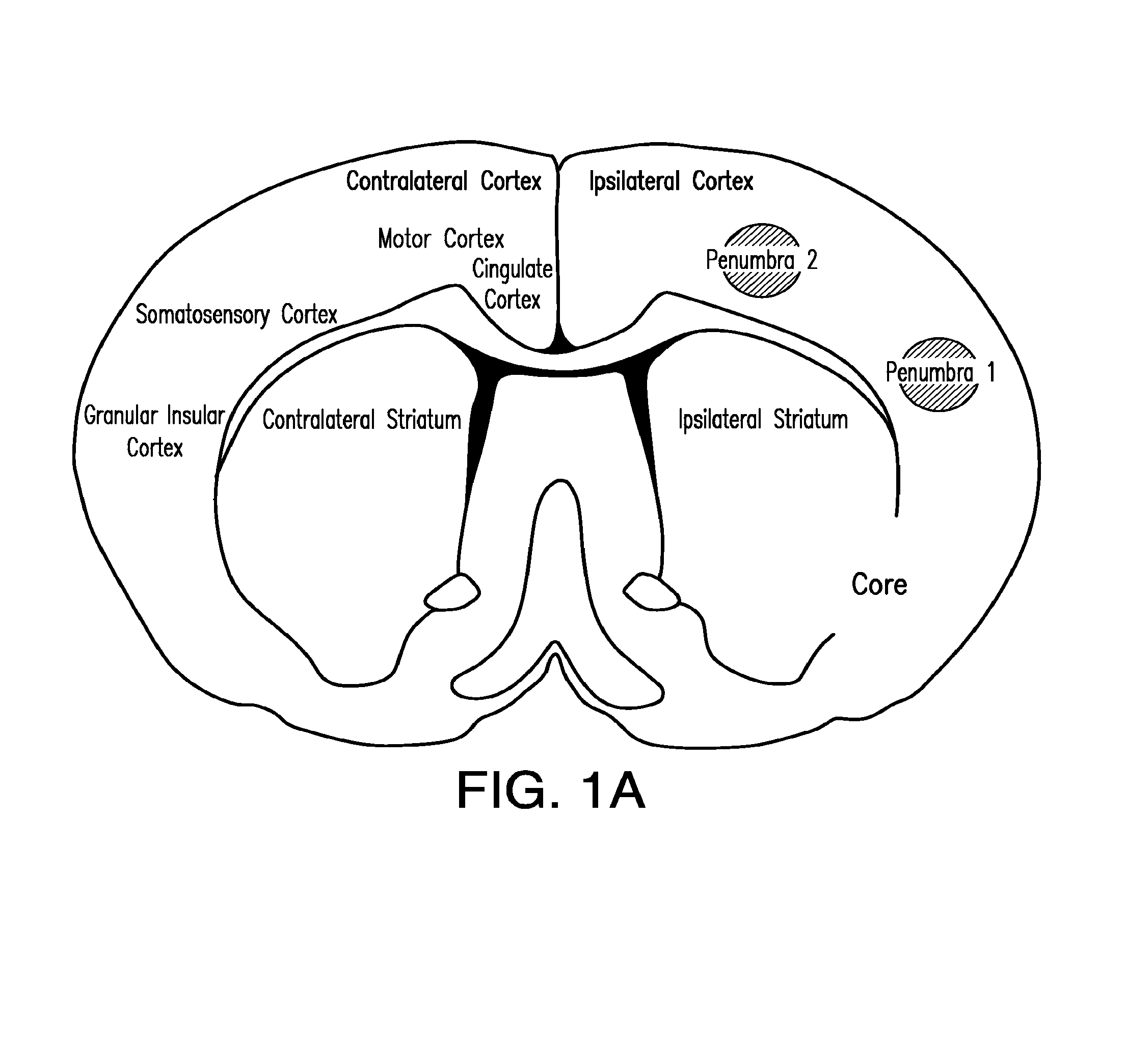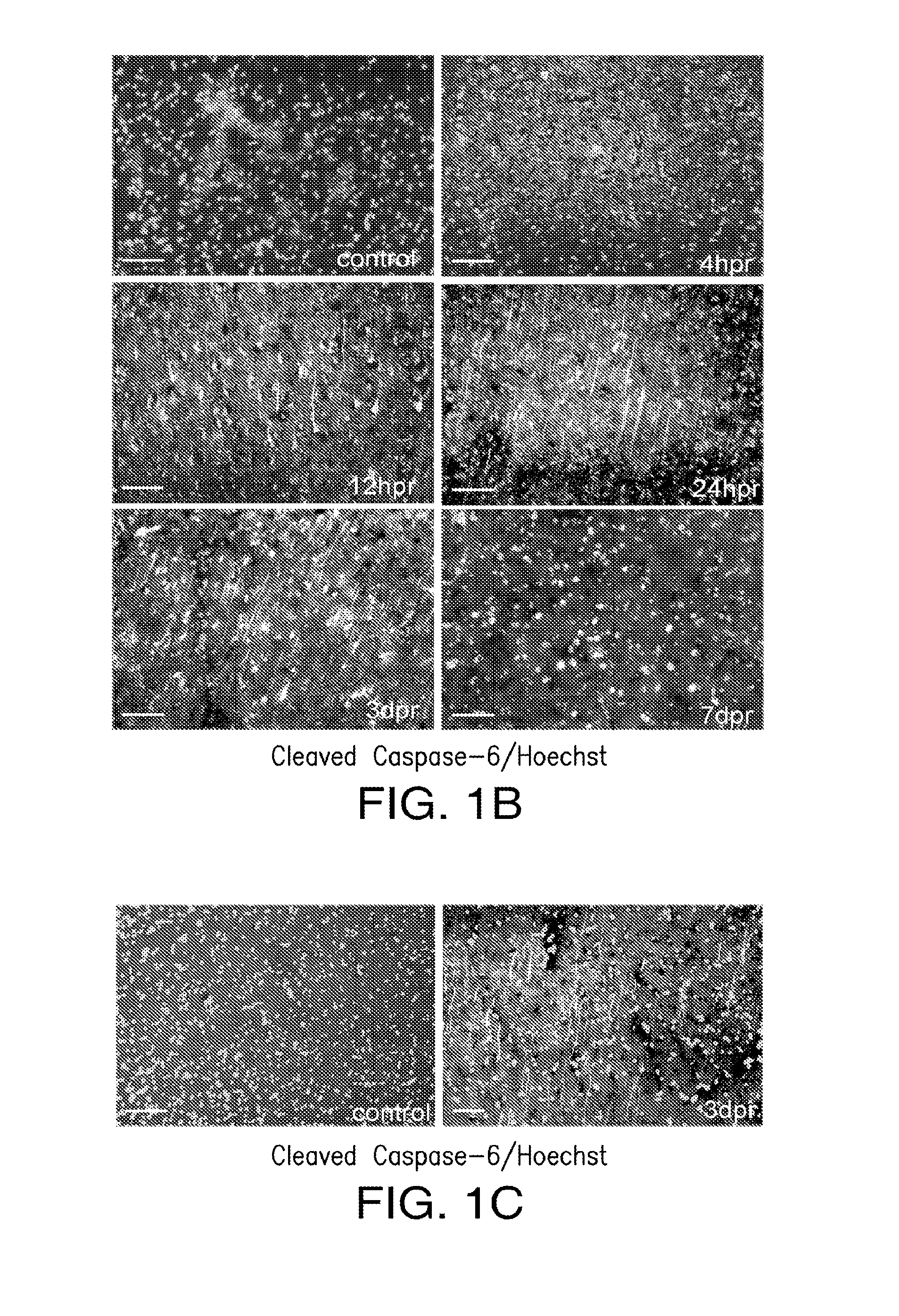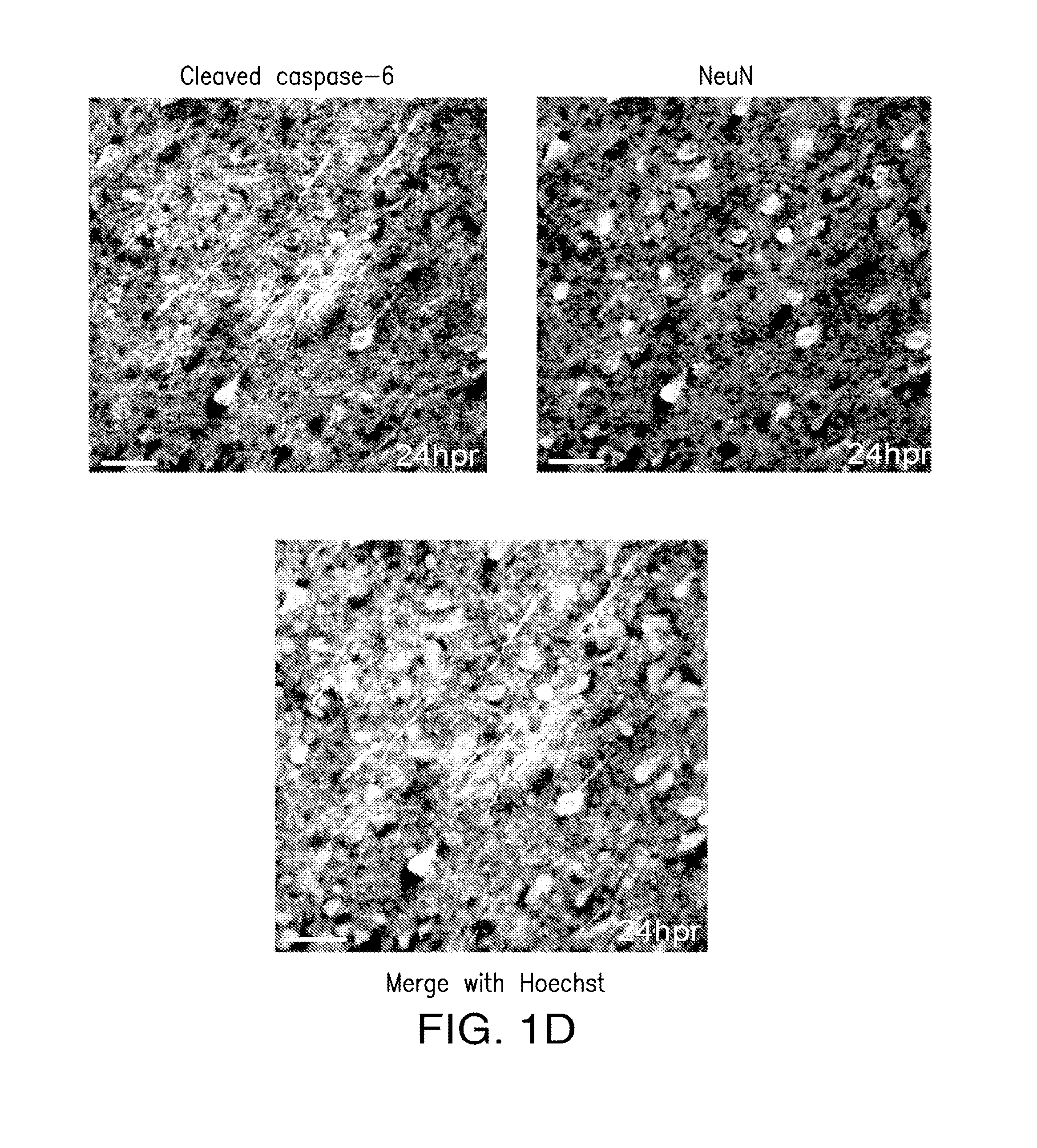Intranasal delivery of cell permeant therapeutics
- Summary
- Abstract
- Description
- Claims
- Application Information
AI Technical Summary
Benefits of technology
Problems solved by technology
Method used
Image
Examples
Embodiment Construction
[0040]The present invention relates to compositions and methods for the inhibition of apoptosis associated with ischemic injury in the central nervous system (“CNS”). For example, the present invention relates, in certain embodiments, to compositions and methods useful for extending the therapeutic window associated with CNS ischemic injury by inhibiting particular apoptotic targets that are either expressed or activated at certain time points after the occurrence of the CNS ischemic injury.
[0041]5.1 Apoptotic Target Inhibtor Compositions
[0042]5.1.1 Caspase Inhibitors
[0043]In certain embodiments, the instant invention relates to inhibitors of apoptosis, such as, but not limited to, compositions that inhibit the apoptotic activity of certain apoptosis-inducing targets. Such apoptotic targets include, but are not limited to, members of the caspase family of proteins. Caspases appear to follow a hierarchical order of activation starting with extrinsic (originating from extracellular si...
PUM
| Property | Measurement | Unit |
|---|---|---|
| Time | aaaaa | aaaaa |
| Time | aaaaa | aaaaa |
| Time | aaaaa | aaaaa |
Abstract
Description
Claims
Application Information
 Login to View More
Login to View More - R&D
- Intellectual Property
- Life Sciences
- Materials
- Tech Scout
- Unparalleled Data Quality
- Higher Quality Content
- 60% Fewer Hallucinations
Browse by: Latest US Patents, China's latest patents, Technical Efficacy Thesaurus, Application Domain, Technology Topic, Popular Technical Reports.
© 2025 PatSnap. All rights reserved.Legal|Privacy policy|Modern Slavery Act Transparency Statement|Sitemap|About US| Contact US: help@patsnap.com



